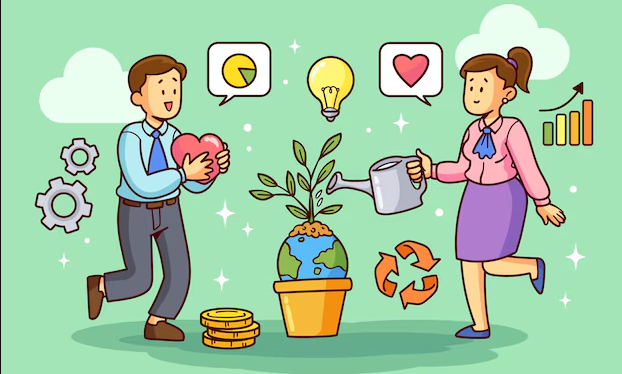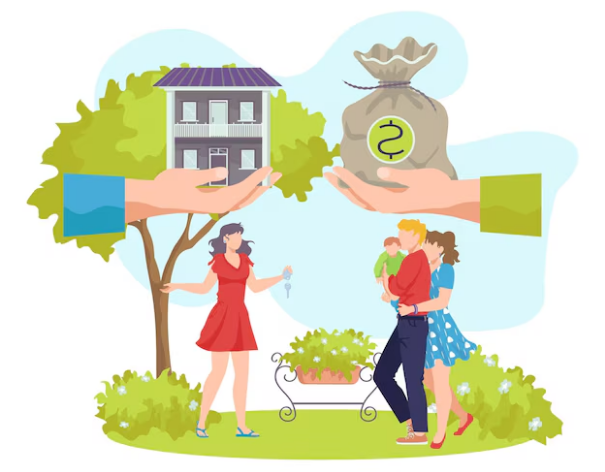Adopting an eco-friendly lifestyle is often associated with higher costs, from organic groceries to sustainable clothing. However, what many people fail to realize is that living sustainably can actually lead to significant financial savings.
By being mindful of how you consume resources and embracing greener habits, you can create a lifestyle that benefits both the planet and your wallet. This article delves into the ways eco-friendly living can help you save more money, with practical insights and actionable ideas to get started.
Rethinking energy consumption for lower utility bills

Energy consumption is one of the biggest areas where eco-friendly practices can make a difference in your budget. The first step to reducing energy bills is by addressing inefficiencies in your home. Simple actions, such as sealing windows and doors to prevent drafts, can drastically reduce heating and cooling expenses. Additionally, investing in energy-efficient appliances, like refrigerators, washing machines, and LED lighting, might have upfront costs but will significantly lower your energy usage over time.
Another powerful way to save money is by rethinking how you use electricity daily. Unplugging devices when not in use, turning off lights when leaving a room, and washing clothes in cold water are small but impactful changes. Over time, these habits not only cut down on energy expenses but also reduce your household’s carbon footprint. For those ready to make a larger commitment, installing solar panels can further decrease utility bills while adding value to your property.
Moreover, adopting renewable energy sources or green electricity plans can also lead to long-term savings. Many utility companies now offer programs that incentivize customers to use renewable energy, such as lower rates during off-peak hours or rebates for energy-efficient upgrades. By taking advantage of these programs, you can make eco-friendly choices that directly benefit your budget.
Reducing food waste and eating sustainably
Food waste is a significant problem both environmentally and economically. By reducing the amount of food you throw away, you can save hundreds of dollars annually while contributing to a more sustainable food system. One effective strategy is planning meals in advance and creating shopping lists that align with your actual needs. This minimizes impulse purchases and ensures that you use the ingredients you buy before they spoil.
Another way to save money while eating sustainably is to prioritize seasonal and locally produced foods. These items tend to be fresher, cheaper, and require fewer resources to transport. Moreover, growing your own fruits, vegetables, and herbs can further reduce grocery costs while giving you the satisfaction of cultivating your own produce. Even if you live in an urban area, small-scale gardening options, such as container or vertical gardens, can yield significant results.
Composting food scraps is another eco-friendly habit that indirectly saves money. By creating nutrient-rich soil from your waste, you can cut down on the need for expensive fertilizers if you garden. This practice also reduces landfill contributions, which helps reduce methane emissions and supports a cleaner environment overall.
Embracing minimalism and rethinking consumption
The principles of minimalism align perfectly with eco-friendly living and can lead to significant financial savings. By focusing on purchasing only what you truly need, you reduce waste, save money, and avoid clutter. Before making a purchase, ask yourself whether the item serves a meaningful purpose in your life or if it’s a fleeting desire fueled by marketing or trends.
One of the most effective ways to practice minimalism is by buying secondhand items or repurposing what you already own. Thrift stores, online marketplaces, and community exchanges offer affordable options for clothing, furniture, and electronics. Not only does this reduce demand for new production, but it also helps you save substantial amounts of money compared to buying brand-new items.
Additionally, adopting a “repair rather than replace” mindset can help extend the life of your possessions. Whether it’s mending clothes, fixing appliances, or refurbishing furniture, repairing items is often far more cost-effective than discarding and replacing them. This approach not only saves money but also reduces the environmental impact of waste and manufacturing.
Choosing sustainable transportation for lower expenses
Transportation is another major area where eco-friendly choices can save you money. Public transportation, biking, and walking are not only greener alternatives to driving but also significantly cheaper. By reducing reliance on personal vehicles, you can save on fuel, maintenance, and insurance costs while lowering greenhouse gas emissions.
For those who need a car, choosing a fuel-efficient or electric vehicle can result in long-term savings. Hybrid and electric cars often have lower fuel and maintenance costs compared to traditional gas-powered vehicles. Additionally, many governments offer tax incentives and rebates for purchasing eco-friendly vehicles, which can offset the initial investment.
Carpooling and ride-sharing are other cost-effective and sustainable options. Sharing rides with coworkers, friends, or family reduces the number of vehicles on the road, cutting fuel expenses and emissions. Over time, these small shifts in transportation habits can lead to significant financial and environmental benefits.
Water conservation for lower utility costs
Water is a precious resource, and conserving it is not only crucial for the environment but also for reducing utility bills. Simple adjustments, such as fixing leaks, installing low-flow fixtures, and turning off taps while brushing your teeth, can significantly lower water consumption. Over time, these small changes add up, saving both water and money.
Collecting rainwater for outdoor use, such as watering plants or cleaning, is another eco-friendly practice that reduces your reliance on municipal water. Similarly, using water-efficient appliances, such as dishwashers and washing machines, ensures that you use the minimum amount of water necessary for daily tasks.
Another way to conserve water is by practicing smart landscaping techniques. Planting native or drought-resistant species requires less irrigation and maintenance, which not only saves water but also reduces the need for fertilizers and pesticides. By designing your outdoor spaces with sustainability in mind, you can create a beautiful environment that aligns with eco-friendly values and financial prudence.
Conclusion
Eco-friendly living is not just about protecting the environment; it’s also a practical approach to saving money. By rethinking energy consumption, reducing food waste, embracing minimalism, choosing sustainable transportation, and conserving water, you can make a significant impact on both your finances and the planet. Every small step adds up, and the cumulative benefits of these choices will not only enhance your quality of life but also contribute to a more sustainable future for everyone.






